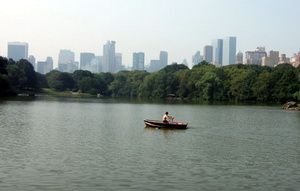I'm excited to start this week out on a green note! This week I will be talking about green design as it relates to kitchen design and general principles of the many ways there are to think green.
 I'm happy today, to introduce you to Jeff Holloway, CKD, a force behind the new blog, K+BB Green. It's a blog about greening our kitchens and baths. I'm late to the party introducing Jeff, although he and I have been talking since the summer! Busy schedules intervened, and I chose to wait to introduce his blog until after he attended the Green + Design Conference to hear his thoughts on the subject and connect to what he learned.
I'm happy today, to introduce you to Jeff Holloway, CKD, a force behind the new blog, K+BB Green. It's a blog about greening our kitchens and baths. I'm late to the party introducing Jeff, although he and I have been talking since the summer! Busy schedules intervened, and I chose to wait to introduce his blog until after he attended the Green + Design Conference to hear his thoughts on the subject and connect to what he learned.
It's a blog I certainly will be watching with great interest, especially since we are both kitchen designers. I have been very remiss in writing about green kitchen design, and that will now change. There is so much to say about kitchens, other than green related topics, but, I feel privileged to have my blog as a platform to promote responsible issues such as this, and I will do much more on this issue. In that regard, I will be attending my third seminar on green kitchen design soon. I'm finding that the more I know, the more I care about the issue.
Here are a few posts about the recent conference that Jeff wrote. First is about The Lazy Environmentalist. And, another post on first impressions.
Here's what Jeff wrote to me as a general introduction to his blog, K+BB Green:
Time To Rethink Green, by Jeff Holloway, CKD
The design community is too focused on the products of green. This feel-good approach is not going to be effective over time. Product choices are driven by trends, trends are fashion and fashion goes out of style.
Specifying green products into our designs is a great start, but designers should focus more on the actual issues that have created awareness for sustainable design and then implement products and practices that can contribute to a solution. There is a lot more to this than choosing sustainable flooring, cabinets and countertops.
The commercial building industry gets it. The LEED guidelines that they use to help design their buildings work. Instead of requiring the use of certain products or even construction techniques, the program sets certain goals for buildings. For example, a building gains points for achieving a certain percentage of water or energy reduction compared to non-green buildings. So architects and designers are forced to look at the project as a whole rather than the individual parts specified. We can learn a lot if we look at what LEED has accomplished.
Green design is much more than compact florescent lights and the latest and greatest countertop materials fabricated from recycled material. Designers should be specifying green products for some other reason then the proverbial “because we think it’s the right thing to do.” We need to educate ourselves about the why and then implement a plan that helps us design environments that keep our clients healthy while conserving our resources.


